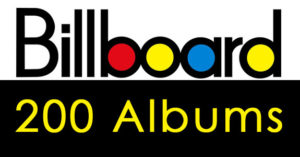 After updating the Billboard 200 chart to reflect both streaming and track sales a few years ago, Billboard is now doing the same for most of it’s other genre-based album charts as well.  The following charts will now reflect the new measurement methodology starting this week:
After updating the Billboard 200 chart to reflect both streaming and track sales a few years ago, Billboard is now doing the same for most of it’s other genre-based album charts as well.  The following charts will now reflect the new measurement methodology starting this week:
Top Country Albums
Top R&B/Hip-Hop Albums, plus:
-R&B Albums
-Rap Albums
Top Rock Albums, plus:
-Alternative Albums
-Hard Rock Albums
-Americana/Folk Albums
Top Latin Albums, plus:
-Latin Pop Albums
-Regional Mexican Albums
-Tropical Albums
-Latin Rhythm Albums
Top Dance/Electronic Albums
Top Gospel Albums
Top Christian Albums, plus:
-Christian/Gospel Albums
Soundtracks
Top Catalog Albums
Holiday Albums
The charts are still primarily based on sales, but 10 digital track sales from an album will equate to one equivalent album sale (TEA), and 1,500 on-demand song streams from an album will be equivalent to one album sale (SEA). Sales and streaming data is compiled by Nielsen Music. Billboard will also continue to publish pure album sales charts for the above genres using Nielsen’s sales data exclusively.
By moving to a “consumption” methodology, Billboard is trying to make sure that the top-ranked titles each week on the above charts align with the top titles of those genres on the Billboard 200.
The on-demand subscription services that provide the data for the charts are Spotify, Apple Music, Tidal, Amazon Music, Soundcloud, Slacker, Napster, Google Play, Groove Music and Medianet.
This is actually a good thing in that all the “official” charts will be measured the same way with data from physical sales, digital sales, and stream consumption. That said, with sales of both physical and digital costing more than streams, you have to wonder whether they’re worth more and should be pro-rated as such. This is a step in the right direction though, at least until music sales become a much smaller part of the picture.

 After updating the Billboard 200 chart to reflect both streaming and track sales a few years ago, Billboard is now doing the same for most of it’s other genre-based album charts as well.  The following charts will now reflect the new measurement methodology starting this week:
After updating the Billboard 200 chart to reflect both streaming and track sales a few years ago, Billboard is now doing the same for most of it’s other genre-based album charts as well.  The following charts will now reflect the new measurement methodology starting this week:
